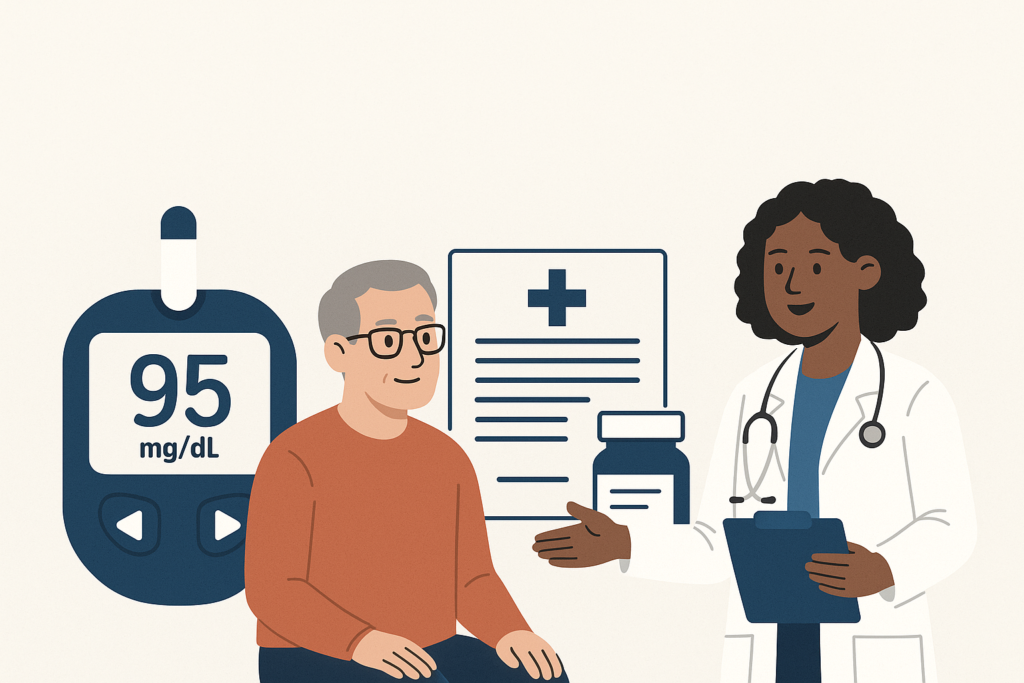Diabetes is a disease that now affects millions of people in the world and is getting more common in people of all ages. More than 38.2 million people are suffering from diabetes in the US alone. It affects a person’s life from what they eat to how often they visit the doctor. About 14.2% of people visit a physician’s office with type 1 and type 2 diabetes which is huge. To handle these large volumes of patients and retain cash flow, physicians rely on an important factor called medical coding, which goes beyond meal plans and blood sugar monitors. For accurate diagnosis and managing claims, it is important to understand what ICD-10 code E11 means. So whether you’re a patient, a medical biller, or a primary care provider, let’s understand the ICD-10 Code E11 for Type 2 Diabetes Mellitus.
What Is ICD-10?
The ICD-10 stands for the International Classification of Diseases and is now running its 10th Revision. It’s just like a book in which all diseases are given a unique alphanumeric code. This system is used worldwide, especially in the U.S., and plays a huge role in medical billing and insurance reimbursement. It is a universal language used between healthcare providers and insurance companies. When a provider diagnoses a patient with a condition like Type 2 diabetes then they use the ICD-10 code E11 to document it properly. This code is then used for everything from tracking health statistics to getting paid by insurance.
Meet E11: The Code for Type 2 Diabetes Mellitus
What does E11 actually mean?
- E = Endocrine, nutritional, and metabolic diseases
- 11 = Type 2 diabetes mellitus
But that’s just the basic code. The full list of E11 codes is actually a family of codes that capture the specific complications or manifestations related to Type 2 diabetes. For example:
- E11.9 = Type 2 diabetes mellitus without complications
- E11.21 = Type 2 diabetes mellitus with diabetic nephropathy
- E11.40 = Type 2 diabetes mellitus with diabetic neuropathy, unspecified
- E11.65 = Type 2 diabetes mellitus with hyperglycemia
And there are also more included in it.
Each one gives a clearer description of the patient’s specific condition which is important not just for treatment but also for billing and care coordination.
Why Do ICD-10 Codes Matter So Much?
A common question here is “Why do I need to care about a code if I already know I have Type 2 diabetes?“ That’s a fair question. But this code isn’t just for paperwork. It influences how your condition is documented, how it’s treated, and how your care is paid for.
For Patients:
- Accuracy is everything. If your doctor or billing team uses the wrong code or just the base code (E11.9) when there’s actually a complication then it can lead to claim denials or differences in the right care.
- It affects your medical records. The specific E11 code that’s used builds your health history and helps future providers understand what complications you’ve had and what treatments have worked.
For Providers:
- Accurate coding is necessary for faster reimbursement. Use the wrong code and you’ll probably get a denial from the insurance company. Use the right one and you get paid faster.
- Better care tracking. E11 codes help you track the patient’s condition and monitor how it changes over time.
Subcodes of the E11 for Type 2 Diabetes
Let’s look at some of the most commonly used E11 subcodes and what they actually mean in everyday clinical situations.
E11.9 – Type 2 Diabetes Mellitus Without Complications
This one’s straightforward. Use E11.9 when the patient has Type 2 diabetes but no current complications like kidney, eye, or nerve damage.
E11.21 – With Diabetic Nephropathy
This one applies when a patient’s diabetes has started to affect their kidneys.
E11.40 – With Diabetic Neuropathy, Unspecified
Use this when a patient has nerve damage due to diabetes but it’s not clearly defined if it’s autonomic or peripheral.
E11.65 – With Hyperglycemia
Sometimes patients aren’t in DKA known as diabetic ketoacidosis but their blood sugar is high and uncontrolled. That’s where the E11.65 ICD-10 code is used.
E11.22 – With Diabetic Chronic Kidney Disease
This code is used when it gets more specific. If the patient has both diabetic nephropathy and chronic kidney disease (CKD) then E11.22 is best to use with CKD stage code (N18.3 for Stage 3).
Always Use Combination Codes When Possible
The main purpose of ICD-10 is specificity. So when coding Type 2 diabetes then always try to use combination codes that describe the complication and the diabetes together. Just like E11.21 used for diabetes with nephropathy is better than separately listing E11.9 + N08.3 (nephropathy). This really matters in coding because combination codes are cleaner, more accurate, and more likely to be accepted by insurance without any complication.
Documentation Tips for Providers
Now with accurate coding, documentation is also very important. As a healthcare provider, you must know good documentation means clean coding. During documentation, you also need to:
- Be specific which means you never need to write just diabetes complications. Say what the complication is like retinopathy, neuropathy, CKD, etc.
- Note severity like mild, moderate, or severe. Include it. It’ll help with staging and proper coding.
- Link cause and effect. Instead of saying CKD and diabetes just, you need to write CKD secondary to Type 2 diabetes to support the E11.22 code.
How Payers Use E11 Codes
Once a claim is submitted to the insurance company, the E11 code helps the payer see:
- If the treatment is medically necessary
- What services should be reimbursed
- Whether the care is considered preventative, chronic, or emergent
Using a general code when a complication is present could mean denied claims, delayed payments, or patients footing the bill themselves.
Common Coding Mistakes to Avoid
Most of the providers make some common mistakes when billing for type 2 diabetes ICD-10. These mistakes include:
- Using E11.9 for all patients, even when complications exist
- Forgetting to include additional codes like CKD stage or retinopathy details
- Not updating codes when a patient’s condition changes
- Omitting documentation that supports the code
Coding mistakes can cause claims to be denied, that’s why it is important to avoid these errors and make them accurate. You can also outsource your coding operations to an experienced medical billing company as professionals can better understand the coding guidelines and how to use the right code.
If you want the best medical billing partner then M&M Claims Care is your best choice. We know how important it is for patients and providers to have better documentation, more accurate treatment, and smoother revenue cycle management. Whether you want coding for mental health billing services or acupuncture billing services, we are here for you. With our expert and certified medical coders, you’ll experience cleaner claims, fewer denials, and more time spent on care instead of billing headaches.






